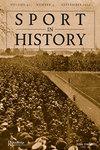From maltas to regulated practice: capoeira in the newspapers of the city of Rio de Janeiro (1901-1919)
IF 0.7
Q4 HOSPITALITY, LEISURE, SPORT & TOURISM
引用次数: 0
Abstract
ABSTRACT In the transition from the nineteenth to the twentieth century, when the Republic was established in Brazil, capoeira in Rio de Janeiro underwent a transformation process. A marginalised and criminalised practice sought to assume a more regulated format. This article used newspapers published in the city of Rio de Janeiro between the years 1901–1919 to analyse this process of change. The documents provide evidence that, in general, the press of the then-Brazilian capital condemned capoeira. However, some editorial lines started to value the technical aspects of capoeira, its educational role, its importance as a sport, and its relevance as a genuinely Brazilian element. In conclusion, despite having different editorial lines, especially after the First World War, the article points out that newspapers began treating capoeira as a national sport and an essential educational means.从马耳他到规范做法:里约热内卢市报纸上的capoeira(1901-1919)
本文章由计算机程序翻译,如有差异,请以英文原文为准。
求助全文
约1分钟内获得全文
求助全文

 求助内容:
求助内容: 应助结果提醒方式:
应助结果提醒方式:


